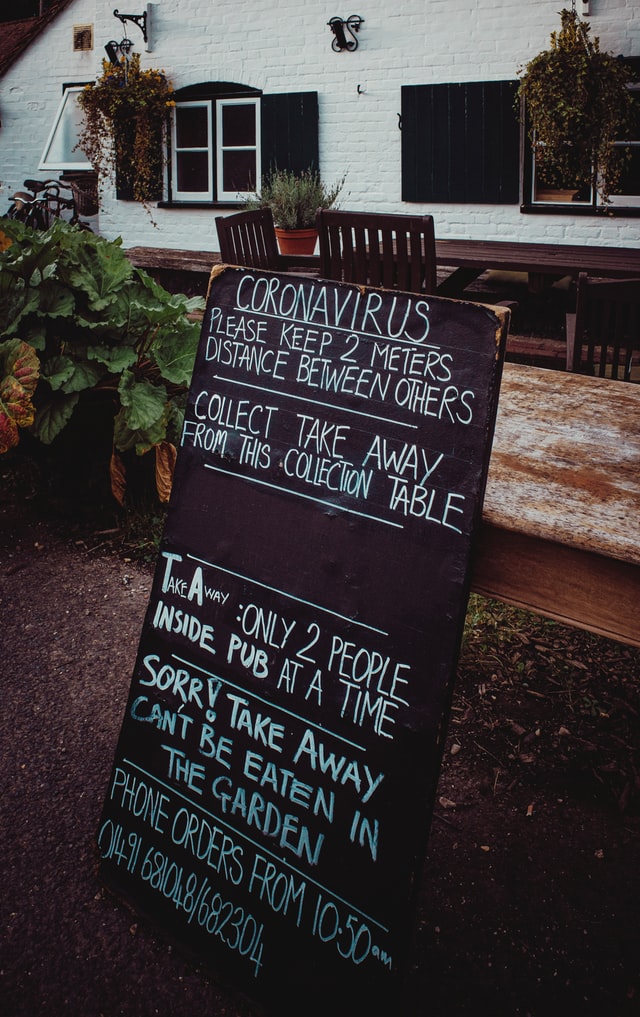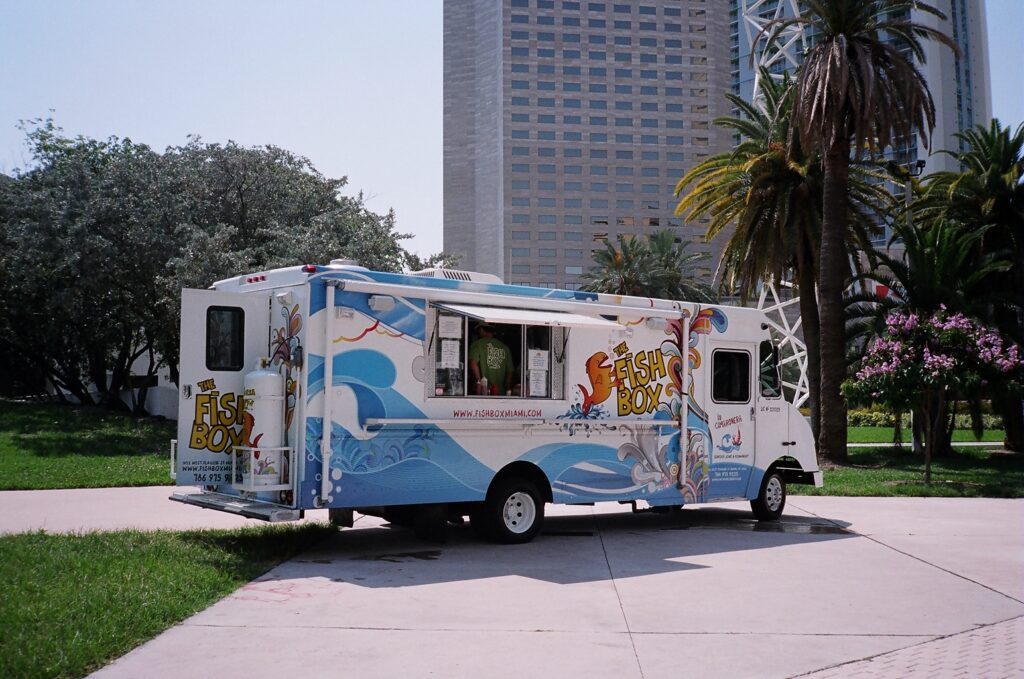Will Your Neighborhood Park Become the Next Dining Hotspot?
Public Parks Offer a Way Forward in the Pandemic Dining Economy
Graham Goldich | January 19, 2021

Amid mandated closures and occupancy limits, in-person dining is amongst the most impacted industries during the COVID-19 pandemic. Nationwide, 1 in 6 restaurants have shut their doors permanently and remaining businesses are struggling to hang on. To help remaining businesses weather the losses in income, cites around the country are exploring different interventions to accommodate outdoor distanced dining.
The City of Los Angeles, CA has responded with a program streamlining permits for converting private parking lots, sidewalks, street parking spaces, lane closures and street closures into outdoor seating. These interim strategies for supplementing limited indoor accommodations are providing indispensable resources for brick-and-mortar sites operating under pandemic restrictions; yet despite these efforts to reimagine in-person dining, recent CDC findings suggest that eating out at restaurants with limited space may pose increased risk in contracting COVID-19.
As someone who is already uneasy about sit-down dining during the pandemic, these findings highlight the need for exploring alternative practices that can accommodate greater distance between diners. Cities are more willing than ever to experiment in the interest of saving local businesses, making this time ripe with opportunity for reinventing our relationship to food in public spaces. Now is the time to consider whether our neighborhood parks could facilitate a new wave of outdoor dining accommodations and play a key role in the recovery of the dining economy.
Reigniting the Romance of Picnics in the Park
Open-air venues are now essential assets to local businesses operating under present restrictions, driving some cities to explore local parks for their potential to support struggling commerce. Facing a downtrodden tourism market, Dublin, Ohio initiated one such strategy to encourage picnic dining in public parks. In a partnership between Dublin tourism officials, and local restaurants, the “Picnic Packs” Program equips patrons with an outdoor dining map directing them to local parks where they may enjoy picnic-style offerings curated by participating restaurants. For communities like Dublin that boast a walkable and biking-friendly infrastructure, such partnerships may prove fruitful; However, for those of us in sprawling cities dependent on motor transport, getting food into our public parks may be less straightforward than a leisurely stroll from neighboring businesses.

Food Trucks as an Engine of Change
A vehicle that could bring new dining experiences to our sprawl-bound parks is the wildly popular and abundant food truck. A product of the great recession, gourmet food trucks offer a low-overhead model of bringing food franchises to market- whether that be in a parking lot, at a private residence or in a local park.
The number of food truck businesses in the US have been growing an average 7.9% annually over the last five years, and with some speculating that the market conditions shaped by the pandemic may drive yet another boom to this already robust industry. The indoor dining market is projected to lag well into the future driving some “innovative brick-and-mortar establishments [to pivot] to mobile dining“. Though food-trucks are faring better than brick and mortar, they have had to test their ingenuity to remain competitive during the pandemic.

Faced with losses in commercial corridor foot traffic and an evaporated events market, food truck operators across the country are venturing into neighborhoods in search of homebound clientele. Partnering with parks departments, neighborhoods and HOA’s, food trucks are bringing outdoor dining and contactless pickup, directly to residential consumers. Although integrating food trucks into the residential fabric is not a new prospect, the practice has seen renewed interest amid the pandemic – a trend that positions local parks to play a significant role in the new dining landscape.
The National Recreation and Parks Association (NRPA) in 2018 published an article extoling “Food Trucks [as] the perfect pairing for parks“. The article outlines how parks departments in Broward County, Florida and the City of Brentwood, Tennessee experimenting with food trucks and other cultural programming have seen new vitality in these spaces. Place-making literature suggests that food and beverage vendors are key players in cultivating vibrant public spaces and the country’s burgeoning food truck fleet seems an obvious resource for parks willing to explore their potential.
The NRPA argues that ordinances prohibiting business operations in residentially zoned public parks should be relaxed for food-truck operators. Food truck friendly policy may not only help vendors tap a clientele that is largely working from the safety of their own homes, but may also create new revenue opportunities for the historically underfunded parks system. As the costs of the pandemic continue to mount, Los Angeles County Parks and Recreation is now facing a $23 million budget cut. Permitting fees and leasehold excise taxes for food truck operation may pave a way to help parks departments bridge the gap. Exploring new creative Public-Private Partnerships can offer new avenues to bolster the precarious parks budget and support local businesses struggling through the pandemic.
One possible objection to inviting food trucks into public parks is the potential burden placed on neighboring residents who may not welcome commercial activity so near their homes. Parks departments experimenting with this practice are approaching such concerns by issuing permits on scales and schedules that best suit the needs of the neighborhood. Most commonly this practice manifests in local parks hosting weekly food truck day events that offer local residents access to a variety of vendors. This scheduled regularity creates consistency for both food truck operators and patrons, ensures a balance between food trucks and other park programming, and dampens the potential for overwhelming neighboring residents with constant activity.
In the private sector, outdoor food truck parks are reaching critical acclaim in a growing number of cities in the US. These outdoor venues facilitate thriving food-cultures and economies, creating lively al fresco dining experiences in urban areas. Often offering a mixture of cultural amenities – art installations, live music, games and even movies in the park- these venues support a diverse ecosystem of commerce. Food truck parks are proving resilient in the face of volatile operational mandates and are showing some success balancing a sustainably large patronage without drawing unsafe crowds. Despite some brief closures, the flexible outdoor accommodations are offering clear advantages during the pandemic, especially for a business model that depends on gathering crowds. Incorporating a similar model within our public parks may be a way to help foment a variety of distressed businesses within our communities.
A Place to Grow Local Cuisine
For parks with community gardens, partnerships between food truck operators and community gardeners may be a seed bed of opportunity for local micro-industry. Farm-to-food-truck models outline how such partnerships may offer an outlet for local growers to monetize surplus produce, while supplying food truck operators with seasonal products. The potential here is a cuisine truly rooted within a community, and a menu that satisfies a new hunger for the home grown.
The conditions produced by the pandemic ignited new widespread interest in food gardening. Panicked shoppers became intimately familiar with the vulnerabilities of our highly centralized industrial food supply chain and rampant increases in food insecurity led to some communities advocating for new food priorities. This new hunger for local product may just be the catalyst we need to reimagine the role of our neighborhood parks – A change for present dining safety, and possibly long-term sustainability.

Graham Goldich is an ardent designer, gardener and builder working to translate a passion for ecologically conscious food systems into the medium of landscape architecture. Graham holds an undergraduate degree in Environmental Studies from University of California, Santa Barbara, where he studied the intersections of diet and the environment. Formerly, the principal and founder of culinary landscaping company: Eden Landscape Design LLC and currently in the employ of California’s largest urban farming venture: Farmscape Gardens LLC, he has been working professionally in small-scale food production/landscape construction for the last 6 years. Pursuing a master’s degree in landscape architecture, he is committed to realizing designs celebrating bounty, beauty and community.